
© Sam Lowery and Sarasota Opera. (Click image for larger version)
Dance Like an Egyptian – Choreographing for Aida
www.newchamberballet.com/miro-magloire
www.sarasotaopera.org
Aida opens 30 January 2016
Over the holidays, I spent some time in Sarasota, Florida, a resort town of around 50,000 on the Gulf of Mexico that happens to have both a very good regional ballet company and a respected opera. I was there because my husband, a singer, was rehearsing for Verdi’s Aida at Sarasota Opera. This gave me the perfect excuse to slip in to watch rehearsals for the opera’s ballet, which was in the process of being staged by the New York-based choreographer Mirò Magloire .
Magloire is an intriguing choice for such an assignment. In New York, he works with a small group of dancers under the moniker New Chamber Ballet. The ensemble performs several times a year in one of the spacious studios at City Center. Magloire, who grew up in Germany, is also a trained composer and an accomplished pianist – he recently retired from playing for classes at American Ballet Theatre.

© Thilo Weissflog. (Click image for larger version)
His personal musical interests run mainly to works by twentieth-century composers – Karlheinz Stockhausen, Luigi Dallapiccola, Morton Feldman – often decidedly un-dancey. Most commonly, dance is a response to rhythm, meter, melodic line. But, because these elements are less central to – or wholly absent from – much of the music Magloire works with, his choreography is compelled by other factors. What the audience sees is his answer to a series of self-imposed questions having to do with spacing, expression, sound and the relation between dancer and musician. (The performances always include live music.)
An opera ballet is something quite different. Here, the issues that need to be resolved are mainly external, imposed by the music, the story, the director’s wishes, the style of the staging, the plot and, more concretely, by the stage space, floor, costumes, props…. There are a million things to think about beyond the steps and the internal structure of the dance. In the end, the greatest challenge is to find ways to integrate the dancing with the rest of the stage action. As Magloire says, “ballet and opera don’t really function in the same way at all.”
In the world of opera, dance has a rather low place on the totem pole. Music critics (and opera audiences) can be pretty dismissive. Take the Times review of the 1988 production of Aida at the Met: “To be fair,” the critic writes, “it is difficult to know what to do with the ballet music in Aida: when it comes to dancing in Verdi operas, less is generally more and none is most.” And yet, despite such grouchy pronouncements, a good ballet can add a lot: sparkle, beauty, sensuousness, rhythmic attack, excitement. But there is no doubt that it is a delicate balance, especially for a first-time opera choreographer like Magloire.
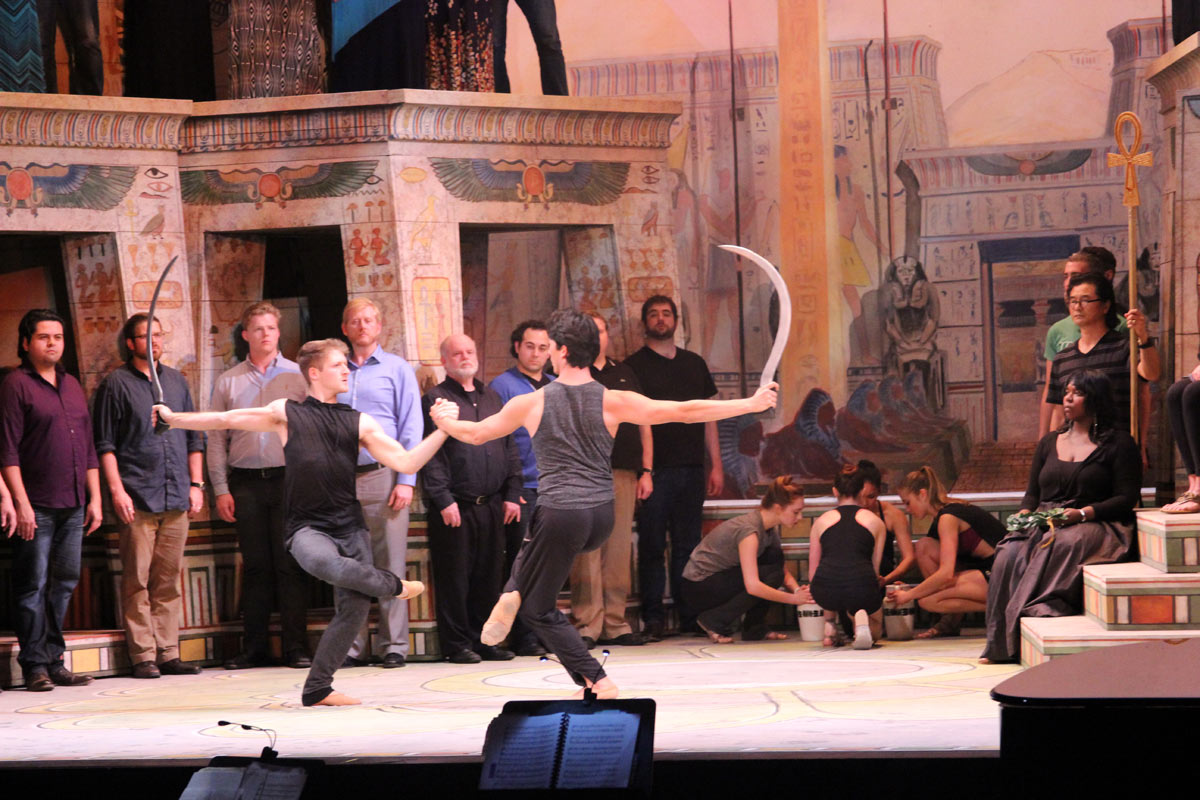
© Sam Lowery and Sarasota Opera. (Click image for larger version)
At 1,200 seats, Sarasota Opera House is not particularly large. Once the set, chorus and soloists are in place, the stage space left over is rather limited. The music in Aida is heroic in scale – who doesn’t know the famous Triumphal March in the second act, with its cast of thousands? The large chorus plays an important role in creating this imposing world. The dancers’ role is smaller. They perform in three scenes: a temple ceremony in the first act, an intimate scene set in the quarters of the pharaoh’s daughter, Amneris, in the second and the famous triumphal march later in the same act. They are there to add color and a visual counterpart to the music. During the opera’s closing moments, they return to form a kind of ceremonial frieze above the cavern in which Aida and her lover Radames are entombed, left to slowly expire in the dark. (The music that accompanies their death is heart-stoppingly beautiful.) Their poses bring to mind the sorrowful attitudes of funeral monuments, weeping angels pining for the departed. But, this being a big opera spectacle with many moving parts, the dancers are also called upon to help out in other ways, carrying props, holding fans, posing sculpturally in boats, pursuing traitors…
Magloire has chosen six dancers, four women and two men. The 1872 production at La Scala had ten times as many. (The choreographer, Giovanni Casati, is largely forgotten.) Obviously, it is impossible to replicate the grandeur of that spectacle. Instead, Magloire has created dance miniatures, highlighting details in the music. In a smaller theatre, it’s possible for the audience to really see what the dancers are doing, and Magloire has taken advantage of that visibility. Big jumps, travelling steps and showstopping tricks are obviously out of the question. Instead, he has tapped into ballet’s repertory of small, quick petit allegro steps, augmented by a generous, supple use of the upper body, little kicks, small jumps, turns in place, circular formations, mirroring, quick changes of direction, tiny, crisp bourrées; all this alternates with quieter, more “exotic” passages featuring sinuous arms, deep leg bends, curved backs.

© Sam Lowery and Sarasota Opera. (Click image for larger version)
A serious student of the form, Magloire went back to original sources – contemporary production books or “Disposizioni Sceniche,” Verdi’s letters, reviews of the premieres – to look for some direction. (Not surprisingly, they provided hints on mood and motivation but not much in the way of actual steps.) Here is the description of the temple dance from the “Disposizione,” for example: “a quiet religious dance in which the usual dancing steps are replaced by simple graceful movements, contemplative poses, genuflections etc.” And the triumphal scene: the dances “must be meaningful and performed around the idols captured from the enemy.” Vague, but still useful in a general sense.
Since this wasn’t his show, Magloire also had to take into consideration the director (Stephanie Sundine’s) wishes: no pointe shoes, no obvious classical ballet positions, but a vocabulary of movement drawn from ballet. In other words something to suggest the kind of dancing that might have been used at the time of Verdi. Not quite pseudo-Egyptian, not quite classical. Of course Verdi’s idea of Ancient Egypt had more to do with his imagination than with any kind of historical realism. He knew what a man of his time would have known: images of the pyramids and of Egyptian art brought back by European archeologists and travelers. “It’s a period piece,” says Magloire.
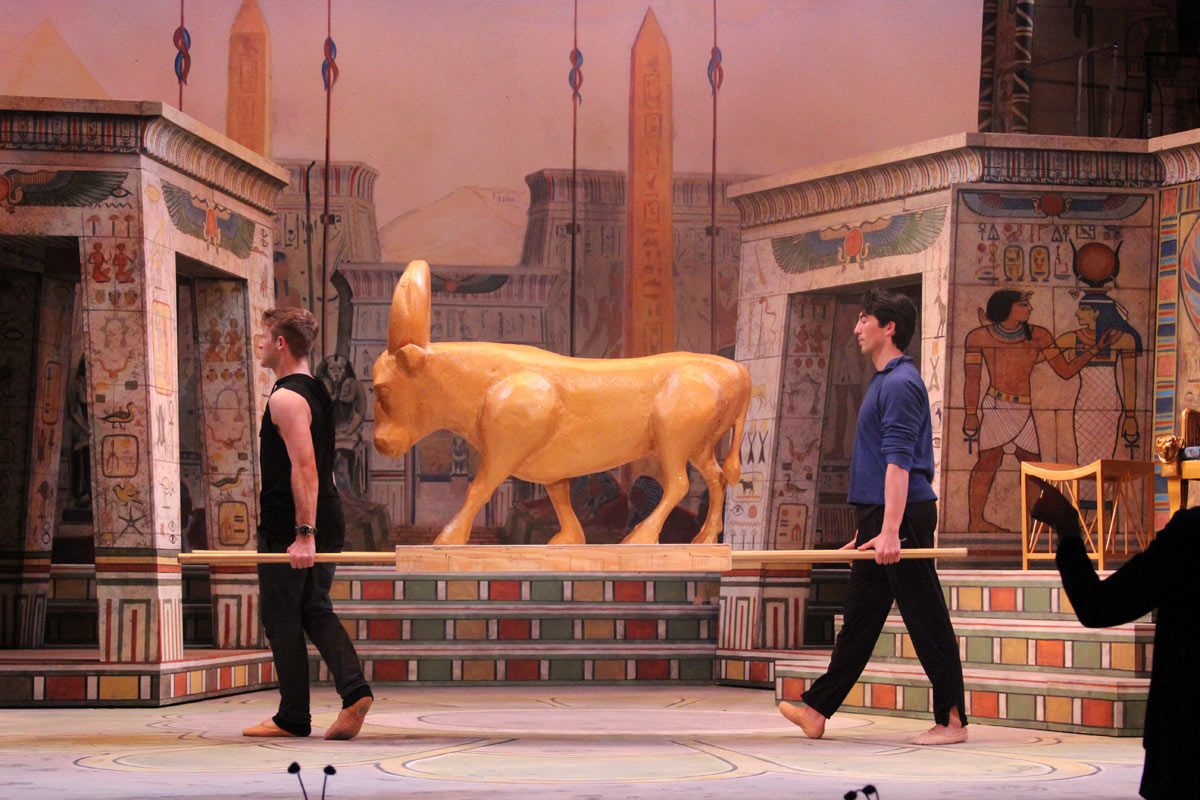
© Sam Lowery and Sarasota Opera. (Click image for larger version)
During the period in question, the 1870’s, the exoticism of the distant East was all the rage. Marius Petipa’s first big success in Russia, Pharaoh’s Daughter, was set in Egypt. His Indian-themed ballet La Bayadère, the story of a temple dancer, was made in 1877, only 6 years after the première of Aida in Cairo. Two years before, Petipa had choreographed the dances for Aida’s Russian première. It’s not difficult to spot the parallels between the two works: both include colorful triumphal marches and revolve around the rivalry between a princess and woman of much lower rank, vying for the affections of a warrior. In both, the heroine dies (of course).
The most important guide for an opera choreographer is the music, which Magloire has followed very closely. Where the music is staccato, the steps are fast and light; where it is languid, the movements are elongated and soft. Whenever a new musical motif enters, you are sure to see it reflected by the arrival of a new dancer or pattern. When the music crescendos, the gestures become larger, more heroic. When it repeats, steps return. In this way, the dance supports the music, reinforcing and illustrating Verdi’s orchestration, structure and melodic line.

© Jacqueline Lopez. (Click image for larger version)
Much of the movement was laid out in advance, in order to save time. Magloire was given details about the space he would have onstage, and worked within those parameters in his studio in New York. But in the transition from studio to stage, certain things had to be adjusted. The studio had a sprung floor; the stage is made of wood covered in stage fabric, which causes friction, which makes turns harder. Instead of ballet slippers, the dancers wear lace-up sandals, which creates even more friction. Props must be handled with as little awkwardness as possible. Jumps must be reined in order to avoid crowding the chorus. In the men’s dance, a turn with the leg held out (à la seconde) was reduced to one with the leg held at knee height, in order to avoid collisions. Entrances and exits were finessed in order to make them look organic.
The dancers, all but one of whom Magloire knew from his work in New York – the final one was located through an ad – adapted quickly, as dancers do. The complex machinery of opera moves much more slowly than that of most dance productions. Enough time and repetition is built into the rehearsal process so that every element can fall into place. It’s a far cry from Magloire’s pared-down dance evenings: “I’m so used to a ‘chamber’ aesthetic,” he says, “where everything is as simple and sparse as possible. Here I have to blend that into something that in many ways is as large as possible.” It’s a question of scale, but also one of emphasis.
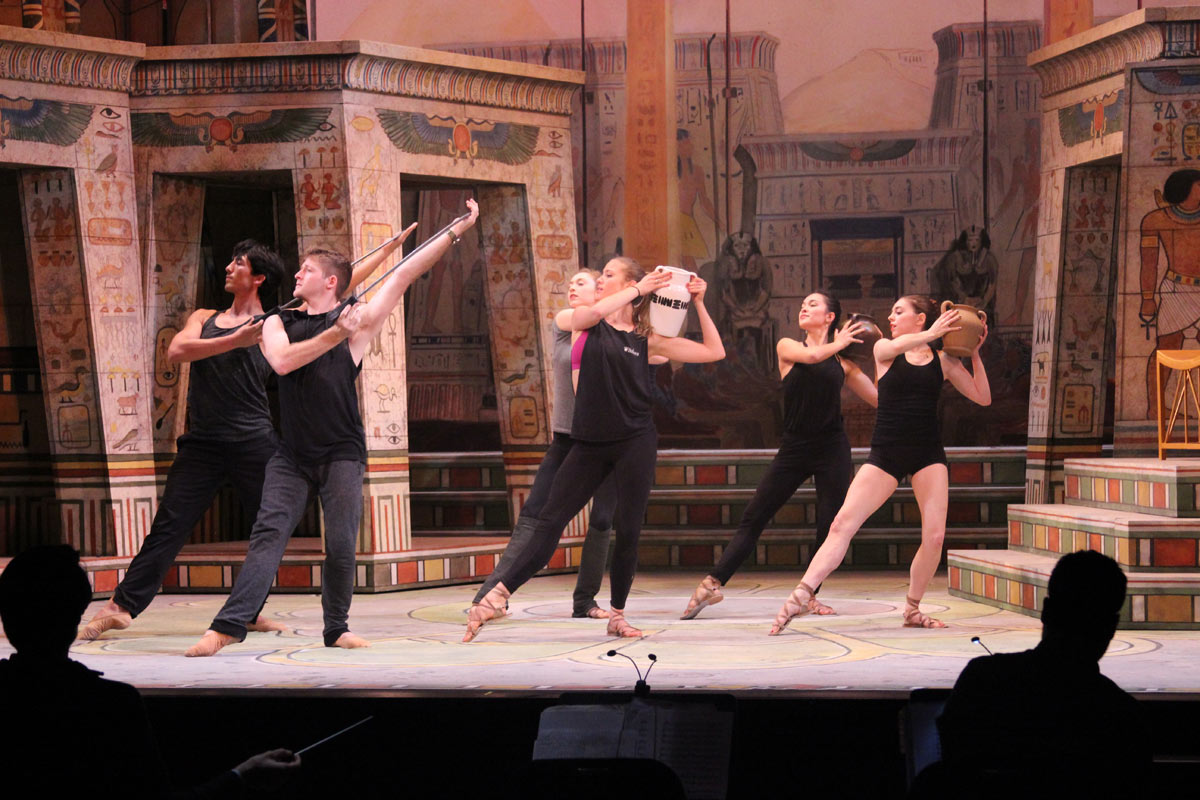
© Sam Lowery and Sarasota Opera. (Click image for larger version)
The final tweaks will have to do with integrating the dancers more fully into the action. How should the dancers in Amneris’s intimate scene relate to the daughter of a pharaoh? And how should the ladies in waiting – members of the chorus – relate to the dancers? How much “naturalism” is enough? How must the transitions between singing and dancing be handled so that one doesn’t distract from the other? Does the choreography hold its own against everything else?
As Magloire puts it, the challenge for the opera choreographer is to “approach the movement in a way that makes it look limitless in a limited space.” And to make it feel as seamless, and as essential, as possible.
The dancers in the photos are: Sasha Pavlovich, a former student of Magloire’s from the Performing Arts School at Bergen Park; Meghan Connolly, a graduate of the Boston Conservatory dance program; Holly Curran, a member of his ensemble, New Chamber Ballet, and a free-lance dancer who has performed in many operas at the Metropolitan Opera; Arianna Henry, a freelancer in New York; Nicholas Peregrino, a former member of The Suzanne Farrell Ballet; and Preston Swovelin, a freelancer who most recently toured with Bad Boys of Dance.
Here is the triumphal scene from the Metropolitan Opera’s 1988 production of Aida, choreographed by Rodney Griffin:
Aida opens January 30 2016






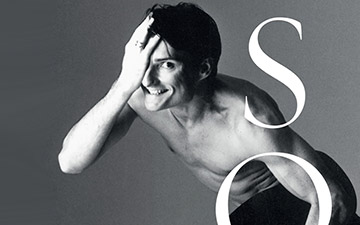


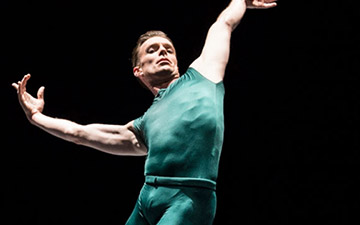


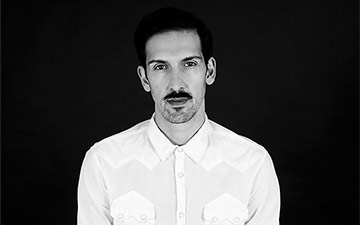
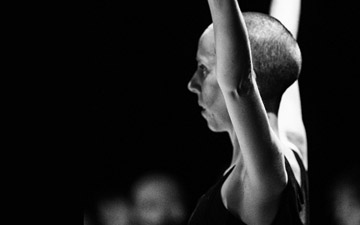



You must be logged in to post a comment.